Philippines' 1st Property Portal
residential properties for rent in Antipolo City
14 properties found Updated Dec 23, 2025
Updated Dec 23, 2025
- Antipolo City
 Updated Jun 09, 2025
Updated Jun 09, 2025
- 3
- 2
- 2
- Antipolo City
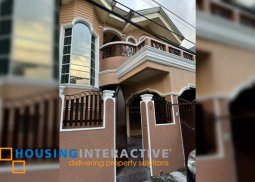 Updated Jan 09, 2025
Updated Jan 09, 2025
- 2
- 1
- 2
- Antipolo City
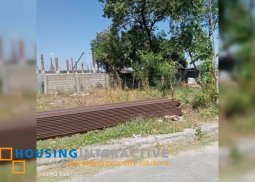 Updated Dec 23, 2024
Updated Dec 23, 2024
- Antipolo City
 Updated Aug 28, 2024
Updated Aug 28, 2024
- Antipolo City
 Updated Aug 08, 2024
Updated Aug 08, 2024
- 3
- 1
- 2
- Antipolo City
 Updated Aug 07, 2024
Updated Aug 07, 2024
- Antipolo City
 Updated Aug 02, 2024
Updated Aug 02, 2024
- 3
- 1
- 2
- Antipolo City
 Updated Jul 17, 2024
Updated Jul 17, 2024
- Antipolo City
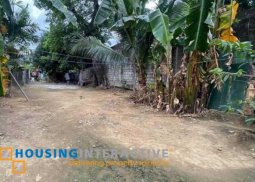 Updated Oct 09, 2023
Updated Oct 09, 2023
- Antipolo City
 Updated Sep 17, 2025
Updated Sep 17, 2025
- 6
- 3
- Antipolo City
 Updated Sep 01, 2025
Updated Sep 01, 2025
- 5
- 2
- 2
- Antipolo City
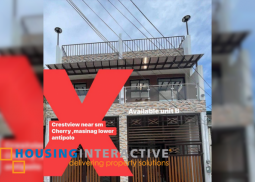 Updated Sep 24, 2024
Updated Sep 24, 2024
- 3
- 1
- 2
- Antipolo City
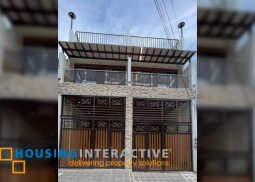 Updated Sep 23, 2024
Updated Sep 23, 2024
- 3
- 1
- 2
- Antipolo City
Residential Properties for Rent in Antipolo City
Discover Your Next Home with a Stunning View
Antipolo, officially the City of Antipolo, is the capital of the province of Rizal, Philippines, and is the most populous city in the province and the Calabarzon region. Located on the slopes of the Sierra Madre Mountain Range, much of the city sits on a plateau, averaging 200 meters above sea level, which offers a scenic view of the Metro Manila skyline, especially at night. It is historically known as a major Catholic pilgrimage site, earning it the nickname "The Pilgrimage City," largely due to the Antipolo Cathedral, which houses the 17th-century image of Our Lady of Peace and Good Voyage. Beyond its religious significance, the city is also recognized for its local products such as mangoes, cashews, and suman, a local delicacy made of glutinous rice.
Residential neighborhoods in Antipolo City often provide a suburban escape from the congestion of Metro Manila, featuring a mix of sprawling subdivisions, villages, and mid-rise developments, particularly in barangays like Cupang, San Isidro, and San Jose. Areas near the city's main thoroughfares, such as Sumulong Highway and Marcos Highway, are highly developed with easy access to commercial centers and schools, while farther areas in the upper parts of the city offer more tranquil and scenic, nature-rich living experiences, particularly in upscale residential estates. Popular areas for properties include established subdivisions like Crestview Homes, Maries Village, and Palos Verde Subdivision, appealing to families and individuals looking for a balance of city convenience and a more relaxed, elevated environment.
Top Places to Visit Near Antipolo City
Antipolo Cathedral
The most famous destination is the National Shrine of Our Lady of Peace and Good Voyage, or the Antipolo Cathedral, which is the heart of the city's religious prominence, attracting millions of devotees, particularly during the pilgrimage season from April to May, and houses the miraculous 17th-century Marian image brought from Mexico.
Pinto Art Museum
The Pinto Art Museum is a sprawling and picturesque complex that showcases a vast collection of contemporary Filipino paintings and sculptures displayed within tropical gardens and Mediterranean-style villas, making it a cultural haven and a popular spot for art enthusiasts and casual visitors alike.
Luljetta's Hanging Gardens and Spa
Luljetta's Hanging Gardens and Spa is a mountainside resort known for its relaxing amenities, which include infinity pools, hydro-massage pools, saunas, and stunning views that overlook Laguna de Bay and the distant Manila skyline, offering a perfect day tour or overnight retreat.
Hinulugang Taktak
Hinulugang Taktak is a protected national park featuring a 21-meter-high waterfall, which, after undergoing rehabilitation, has been restored as a historical and ecological destination with a viewing deck, park area, and a recently opened batingaw (bell)-inspired tower.
Why Live in Antipolo City?
Antipolo City is an attractive place to live due to its unique combination of natural elevation and urban development, offering residents a healthier and more relaxed lifestyle compared to the lowlands of Metro Manila. The city’s location on the slopes of the Sierra Madre provides fresher air, cooler temperatures, and scenic, often overlooking, views, while simultaneously being a component city with a complete range of modern necessities like malls, educational institutions, and hospitals. This balance makes it a prime location for those who desire suburban peace without fully sacrificing urban convenience and accessibility to the National Capital Region.
Renting residential properties in Antipolo City provides a more affordable alternative to homeownership in the area, offering flexibility and lower upfront costs compared to buying, while still allowing tenants to enjoy the city's desirable elevated lifestyle and proximity to Metro Manila. Rental properties, ranging from apartments and townhouses to house-and-lots in various barangays like Cupang, San Luis, and San Jose, cater to diverse budget needs and preferences and often include access to community amenities such as security and convenience to schools and public transportation. This option is particularly appealing to those who commute to the capital but wish to reside in a less congested, more scenic environment.
How to get to Antipolo City?
Antipolo City is highly accessible from Metro Manila through various public transport options, with the most direct routes being the LRT Line 2 (LRT-2), which terminates at the Antipolo Station near SM Masinag, as well as city buses, UV Express vans, and jeepneys from terminals in Cubao and other parts of Metro Manila that travel via Marcos Highway or Ortigas Avenue Extension. Once in the city, the town proper near the Antipolo Cathedral is served by jeepneys and a large network of tricycles for short-distance travel within the various barangays and neighborhoods. Proximity to essential services, schools, and public transportation is critical when renting a property in Antipolo.
How much does it cost to live in Antipolo City?
The cost of living in Antipolo City is generally considered to be lower than in Metro Manila, with various reports indicating it is one of the more reasonably priced cities in the country, especially concerning housing, where a budget for a condominium in the capital can often secure a larger house-and-lot in Antipolo. Most rentals require a minimum one-year contract. Rental agreements typically require a two-month security deposit and a one-month advance rent. The overall cost of goods and other necessities is typically manageable, appealing to individuals and families seeking a larger living space and lower expenses. The average monthly rental price for residential properties in Antipolo City is approximately ₱124,694. Rental rates vary widely, with the most expensive properties reaching around ₱350,000 per month, while the most affordable options can be found for as low as ₱28,000 per month.
Inspect the property condition thoroughly before signing the lease to document existing damage and ensure landlord accountability for maintenance. Utilities like electricity and water may or may not be included in the rent; it's important to clarify this with landlords. Many gated communities require monthly association dues, which may or may not be included in the advertised rental price.
Is it safe to live in Antipolo City?
Antipolo is generally considered a safe city to live in, with a low reported crime rate and a hospitable local population, and the local government actively works to prioritize safety, including hiring additional public safety enforcers to augment security and traffic management. However, as with any large city, it is always wise for residents and visitors to remain vigilant, especially when traversing less crowded areas or traveling at night, while the city also faces geographical challenges, prompting continuous efforts by the City Disaster Reduction and Risk Management Office to mitigate risks in landslide- and flood-prone communities.
Discover your next home with a stunning view! HousingInteractive, the Philippines' first property portal, is dedicated to delivering property solutions that connect you with the ideal residential properties in Antipolo City. Explore our listings today and find your perfect home overlooking the Metro Manila skyline!
How much is a residential properties for rent in Antipolo City?
In total, there are 14 residential properties for rent in Antipolo City. The average price for a residential property for rent in this location is ₱124,694 per month. The most expensive rental for a residential property here costs about ₱350,000 while the most affordable rental price is about ₱28,000.
You may find the most expensive and luxurious residential properties for rent in Antipolo City. While you can find classy yet affordable ones also at the same location.
These properties are fully equipped with the following amenities and unit features:
- Laundry Area
- Parking Space